Motorola Atrix 4G Smartphone Performance Benchmarks
The Motorola Atrix Performance Benchmarks
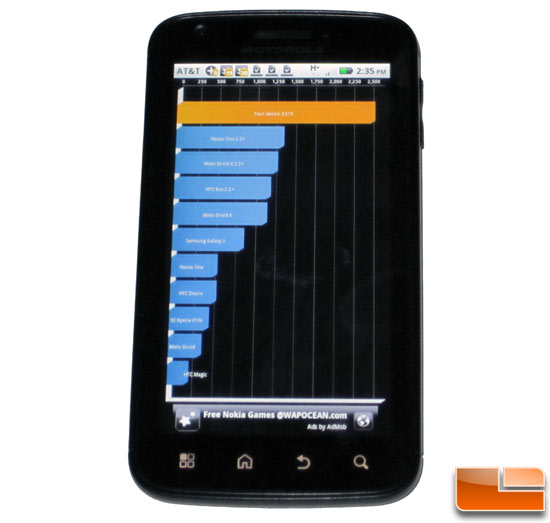
Quadrant is a CPU, I/O and 3D graphics benchmark. The Standard Edition requires an Internet connection to compute benchmark results and is supported by ads, but that should be fine for most users. We used version 1.1.7 for benchmarking the Motorola Atrix 4G.
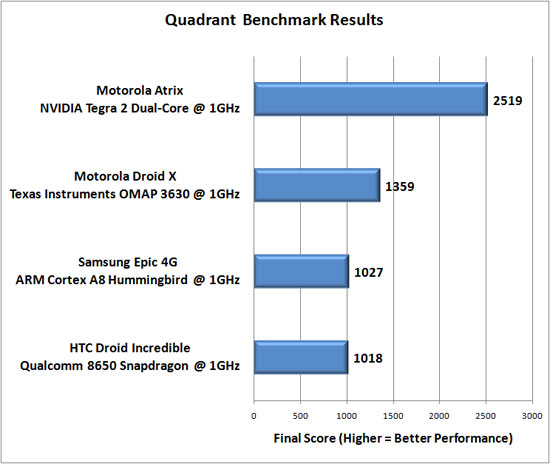
As you can see from the chart the Motorola Atrix 4G dominated the other 1GHz devices that were all running Android 2.2 or 2.2.1! The Motorola Atrix was nearly 2.5x faster than the HTC Droid Incredible and the Samsung Epic 4G. The Motorola Droid X did a little better than the other single-core phones, but can you really call half the speed better? The Motorola Atrix 4G with the NVIDIA Tegra 2 processor was the only Android powered smartphone tested that was running a dual-core CPU and that certainly helped.
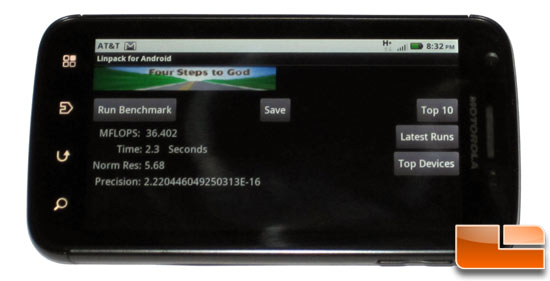
The LINPACK Benchmarks are a measure of a systems floating point computing power. Introduced by Jack Dongarra, they measure how fast a computer solves a dense N by N system of linear equations Ax = b, which is a common task in engineering. The solution is obtained by Gaussian elimination with partial pivoting, with 2/3*N3 + 2*N2 floating point operations. The result is reported in Millions of FLoating-point Operations Per Second (MFLOP/s, sometimes simply called FLOPS). This test is more a reflection of the state of the Android Dalvik Virtual Machine than of the floating point performance of the underlying processor. Software written for an Android device is written using Java code that the Dalvik VM interprets at run time. We used version 1.2.3 for benchmarking the Motorola Atrix 4G.
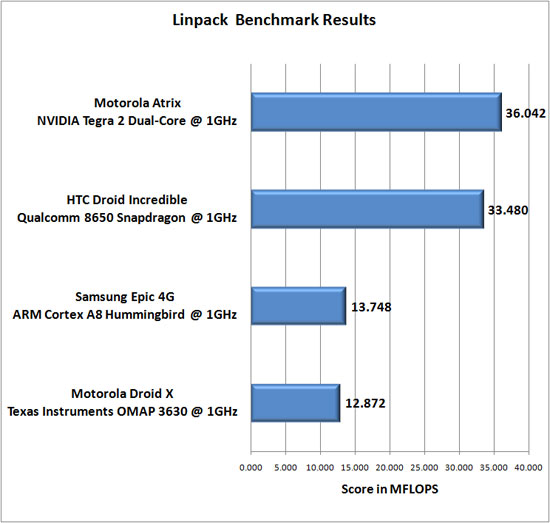
The Motorola Atrix did well on the Linpack benchmark, but as you can see the HTC Droid Incredible gave the Motorola Atrix pretty good run here!
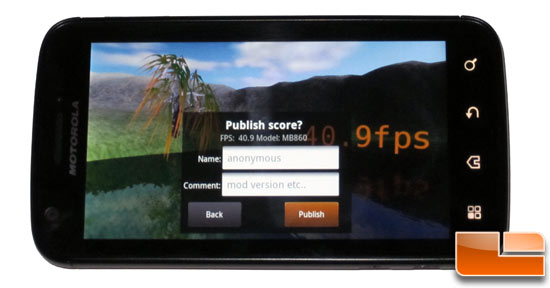
NenaMark is a benchmark of OpenGL ES 2.0, using programmable shaders for graphical effects such as reflections, dynamic shadows, parametric surfaces, particles and different light models to push the GPU to its limits. It can be downloaded from the Android Market or nena.se. We used NenaMark version 1.5 for benchmarking the Motorola Atrix 4G.
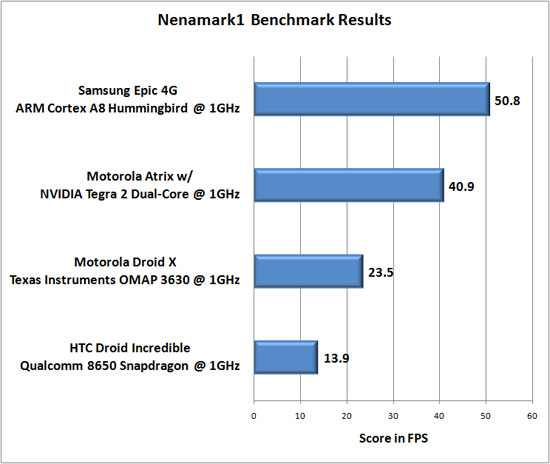
As you can see from the chart the Motorola Atrix 4G did not dominate in this benchmark and it made us wonder what was going on. We reached out to our contacts at NVIDIA and they had this to say about these benchmark results.
Many benchmarks in the Android marketplace are written poorly and show large run to run variances. For 3D performance we are currently using GLBenchmark2.0 EGYPT subtest to compare performance across mobile devices. The Atrix resolution is 960×540 and processes 30% more pixels than the other Android phones that have 800×480 resolution. This will result in slightly lower scores on the Atrix and you may have to scale up the Atrix scores to account for the resolution difference to make an apples to apples comparison. – NVIDIA PR
Final Thoughts and Conclusions:
The Motorola Atrix is an incredibly fast phone and after spending a day with this smartphone it makes it look twice at our Blackberry Bold 9000 and wonder why we still carry it around. We ran some benchmarks side-by-side with other Android devices and the Atrix ran circles around them. We didn’t do any browser benchmarking here today, but it felt fast and the internet speeds were found to be around 3800 kbps down and 140kbps here in St. Louis, Missouri with four bars showing up. We also ran benchmarks like BenchmarkPi and found the Motorola Atrix completed the benchmark in 720-760 milliseconds, which is pretty darn quick. You can download BenchmarkPi and all the benchmarks we used here today on the Andoid Marketplace for free if you would like to run any of these tests on your own smartphone. As you can see the Motorola Atrix is a very power smartphone and they can thank NVIDIA for making it possible since it is powered by the NVIDIA Tegra 2 dual-core processor!

Comments are closed.